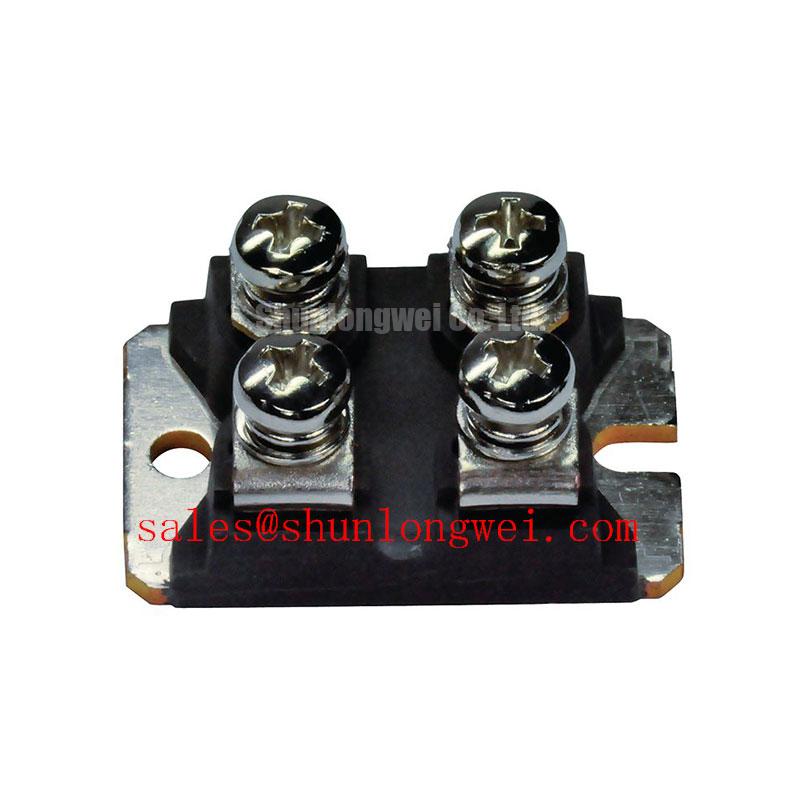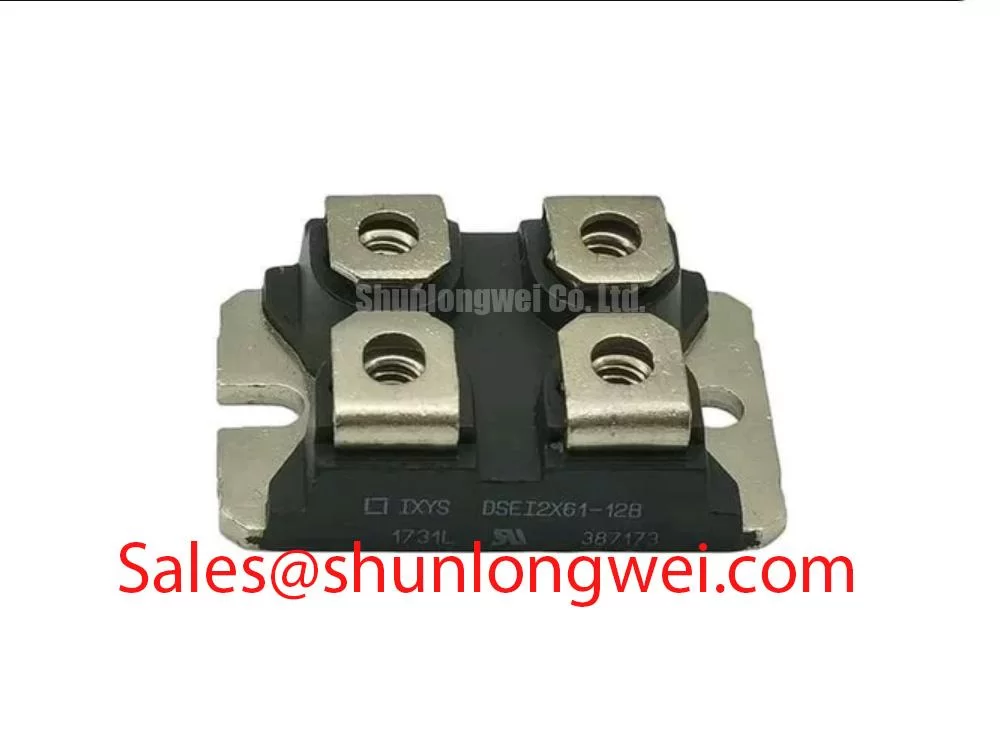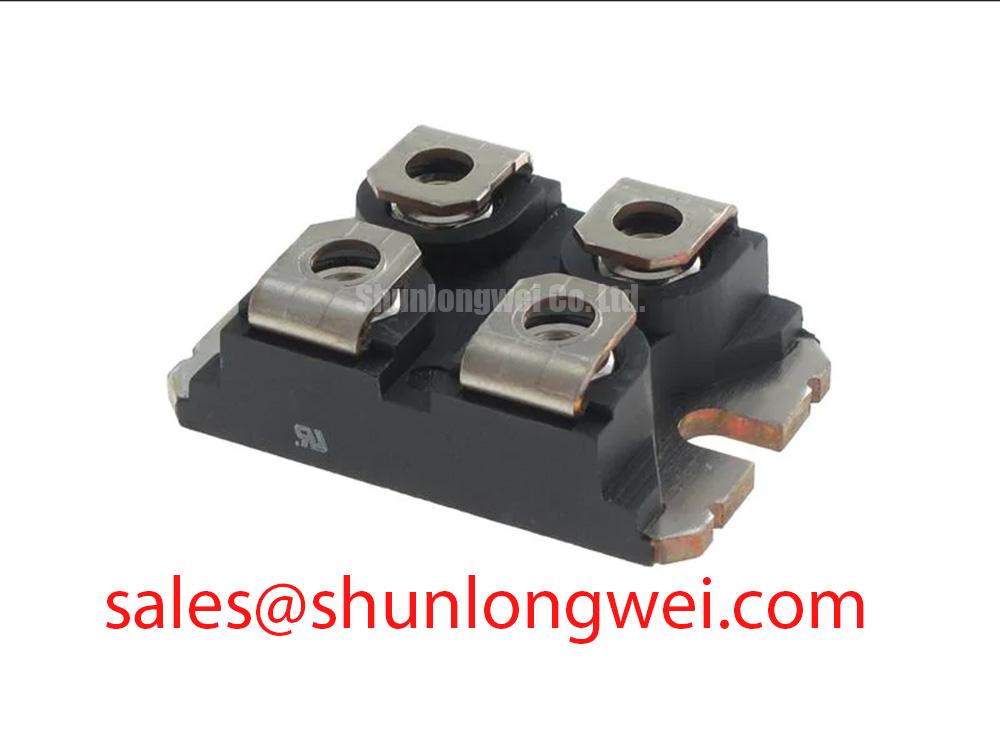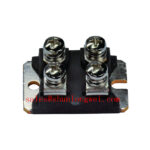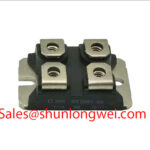Content last revised on November 18, 2025
DSEI2X61-12B: Dual 1200V FRED Diode for High-Efficiency Power Conversion
An Engineer's Introduction to the DSEI2X61-12B
The DSEI2X61-12B is a dual 1200V Fast Recovery Epitaxial Diode (FRED) engineered to elevate performance in high-frequency power converters. It delivers superior switching efficiency and reduced electromagnetic interference (EMI) through its ultra-soft recovery and low reverse recovery charge. With key specifications of 1200V | 61A | 35 ns (typ. trr), this component offers two primary engineering benefits: significantly reduced switching losses and minimized voltage overshoots. For engineers designing power factor correction (PFC) circuits or switched-mode power supplies (SMPS), the DSEI2X61-12B directly addresses the challenge of achieving high efficiency by minimizing the energy wasted during transistor turn-on cycles. For high-frequency PFC stages targeting greater than 98% efficiency, the DSEI2X61-12B's rapid 35ns recovery time is a critical enabler.
Key Parameter Overview
Decoding the Specs for High-Frequency Efficiency
The electrical characteristics of the DSEI2X61-12B are tailored for demanding applications where both conduction and switching performance are paramount. The following table highlights key parameters from the official datasheet, along with their direct engineering implications for system design.
| Parameter | Symbol | Conditions | Value (Typ.) | Value (Max.) | Engineering Implication |
|---|---|---|---|---|---|
| Repetitive Peak Reverse Voltage | VRRM | - | 1200 V | Provides substantial voltage margin for designs operating on 400/480 VAC lines. | |
| Average Forward Current | IFAVM | TC = 115°C; rectangular, d = 0.5 | - | 61 A | Enables high power throughput in a compact TO-247 package. |
| Forward Voltage Drop | VF | IF = 60 A; TVJ = 25°C | 1.35 V | 1.55 V | Lower VF directly reduces conduction losses, minimizing heat generation. |
| Reverse Recovery Time | trr | IF = 1A; -di/dt = 100 A/µs; VR = 30V | 35 ns | - | Fast switching capability essential for high-frequency operation in SMPS and PFC circuits. |
| Reverse Recovery Charge | Qrr | IF = 60A; -di/dt = 1200 A/µs; VR = 600V | 250 nC | - | A low Qrr is critical for reducing turn-on losses in the associated IGBT or MOSFET, boosting overall converter efficiency. |
| Thermal Resistance | RthJC | Junction to Case (per diode) | - | 0.85 K/W | Defines the efficiency of heat transfer from the semiconductor junction to the heatsink. |
Download the DSEI2X61-12B datasheet for detailed specifications and performance curves.
Application Scenarios & Value
System-Level Benefits in Switched-Mode and Motor Drive Topologies
The DSEI2X61-12B is best suited for high-frequency, hard-switching applications where efficiency and EMI performance are key design criteria. Its architecture provides tangible benefits across several power topologies.
- High-Frequency Power Converters: In applications like Boost PFC stages and phase-shifted bridges for SMPS, the primary engineering challenge is managing Switching Loss as frequencies increase. The DSEI2X61-12B's low Qrr directly confronts this issue. A lower reverse recovery charge means the main switching transistor (IGBT or MOSFET) expends less energy during its turn-on transition, which is often the dominant loss mechanism at frequencies above 50 kHz.
- Motor Drives and Inverters: When used as a freewheeling diode in a Variable Frequency Drive (VFD), the diode's "soft" recovery characteristic is invaluable. Abrupt, or "snappy," recovery in a diode can induce significant voltage ringing and EMI. The controlled recovery of the DSEI2X61-12B minimizes these oscillations, reducing stress on the IGBTs and simplifying the design of snubber circuits and EMI filters.
- Welding and Induction Heating: The ruggedness of the diode, evidenced by its high single-pulse surge current capability (IFSM = 600 A), makes it a reliable choice for resonant converters found in welding and induction heating systems, which often experience high peak currents.
While the DSEI2X61-12B offers two independent diodes for design flexibility, for applications requiring a complete bridge solution, a component like the MDD95-12N1B provides a pre-configured thyristor/diode module for AC-DC rectification.
Frequently Asked Questions
Engineering Inquiries on Performance and Integration
What is the primary advantage of the "soft recovery" feature in the DSEI2X61-12B?
Its soft recovery characteristic reduces the rate of current change (di/dt) during the turn-off phase. This minimizes high-frequency voltage ringing and EMI generation, which simplifies filter design and improves the electromagnetic compatibility (EMC) of the entire system.
How does the low reverse recovery charge (Qrr) of 250 nC translate to better system performance?
Qrr represents the charge that must be swept out of the diode to turn it off. This charge contributes directly to the turn-on switching loss (Eon) of the opposing transistor in a half-bridge configuration. A lower Qrr, like that of the DSEI2X61-12B, leads to lower Eon losses, resulting in higher converter efficiency and reduced thermal load on the switching component.
Can the two diodes in the TO-247 package be paralleled for higher current?
Yes, the two independent diodes can be paralleled. However, effective current sharing requires careful PCB layout to ensure symmetrical paths and thermal management to keep the diodes at similar operating temperatures. For a deeper understanding of this topic, reviewing resources on power device paralleling is recommended.
What is the benefit of a 1200V rating for a freewheeling diode in a motor drive?
In motor drive applications, the DC bus voltage can experience significant overshoots due to stray inductance in the power circuit during switching events. A 1200V rating provides a robust safety margin for systems operating with a nominal 600V-800V DC bus, preventing avalanche breakdown and ensuring long-term reliability as detailed in the component's SOA (Safe Operating Area) curves.
How does the forward voltage drop (VF) impact thermal design?
The forward voltage drop, combined with the forward current, determines the conduction losses (Pcond = VF * IF). With a typical VF of 1.35V at 60A, the DSEI2X61-12B minimizes the heat generated during the on-state. This lower power dissipation simplifies heatsink selection and can enable higher power density in the final product.
Technical Deep Dive
Analyzing the Impact of Soft Recovery and Low Qrr on System Performance
Understanding the dynamic characteristics of a FRED like the DSEI2X61-12B is key to unlocking its full potential. The interplay between reverse recovery time (trr), reverse recovery charge (Qrr), and the softness of the recovery curve has profound system-level consequences. What is the primary benefit of its soft recovery? It minimizes EMI and voltage overshoots.
Imagine the reverse recovery current of a diode like the brakes on a car. A "snappy" diode stops current abruptly, like slamming the brakes. This causes a massive jolt (voltage overshoot) and noise (EMI). In contrast, the DSEI2X61-12B exhibits a "soft" recovery, akin to smooth, controlled braking. The current ramps down gracefully, preventing the inductive ringing that stresses other components and pollutes the electromagnetic environment. This inherent characteristic often allows designers to reduce the size and cost of external snubber circuits.
Furthermore, the Qrr can be conceptualized as the "electrical inertia" the main system switch must overcome. How does low Qrr improve efficiency? It reduces turn-on losses in the paired switching transistor. Every switching cycle, the IGBT or MOSFET has to supply this recovery charge, which is dissipated as heat. By minimizing Qrr to a typical value of 250 nC, the DSEI2X61-12B reduces the energy required for this action, directly improving efficiency—a benefit that becomes increasingly significant as switching frequencies push beyond the 50 kHz range. For a complete system view, consulting a guide on decoding IGBT datasheets can provide further context on how diode performance impacts the entire power stage.
An Engineer's Perspective
From a design standpoint, the DSEI2X61-12B is not merely a high-voltage diode; it is a problem-solving component. Its value lies in the synergy of its dynamic parameters. The combination of fast, soft recovery and low Qrr enables a virtuous cycle: higher operating frequencies become feasible without a severe efficiency penalty, leading to smaller magnetic components and capacitors. This, in turn, allows for an increase in overall system power density. The dual-diode configuration within a single TO-247 package further aids this goal by offering flexibility for use in various topologies while conserving valuable board space.

